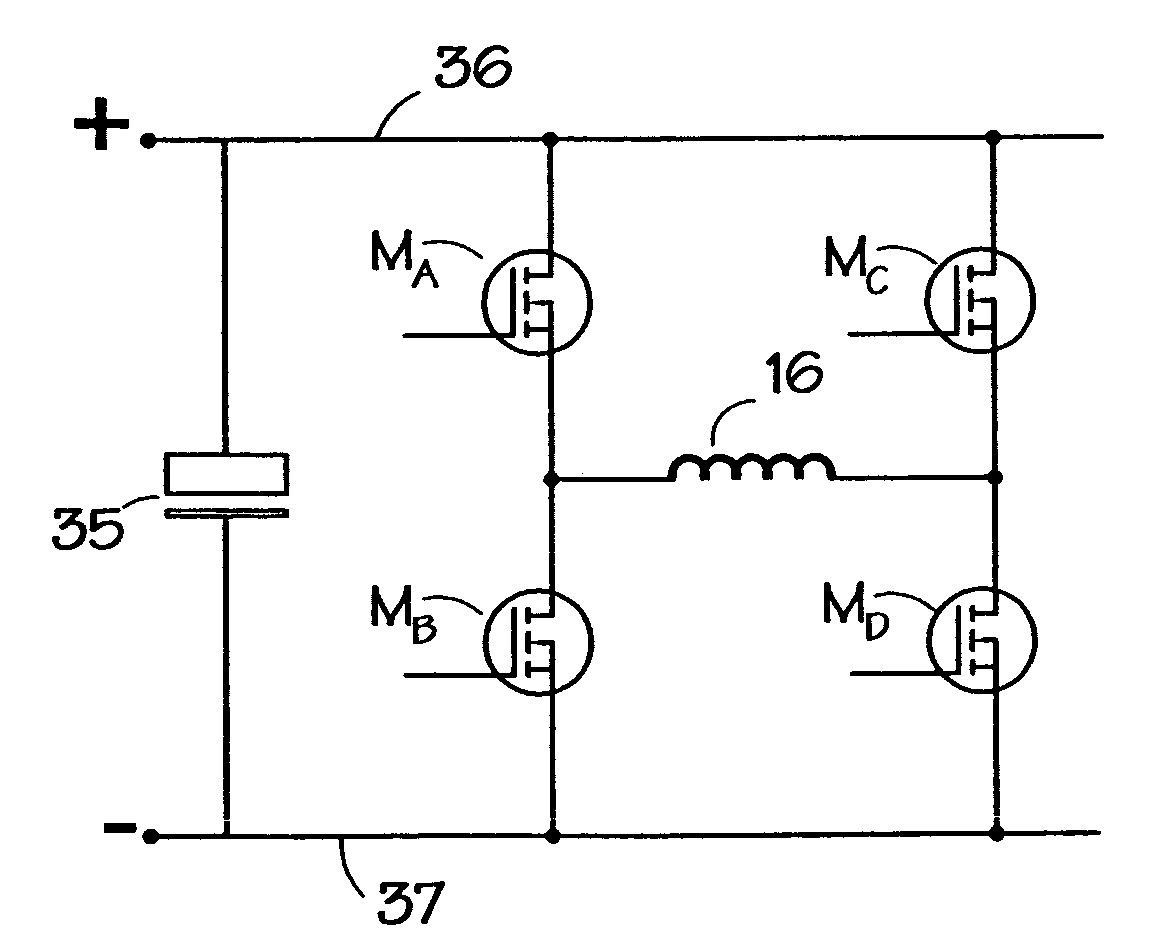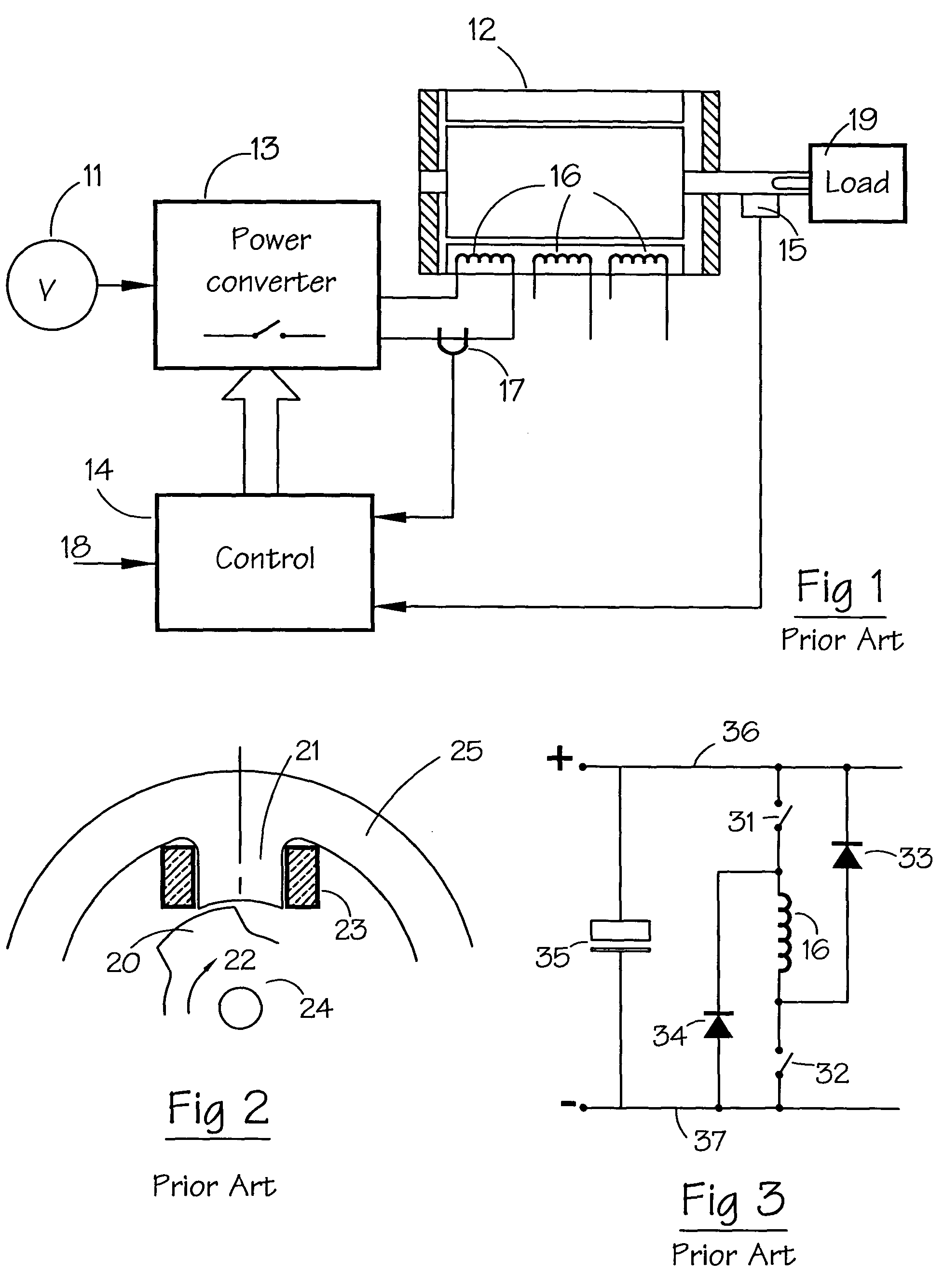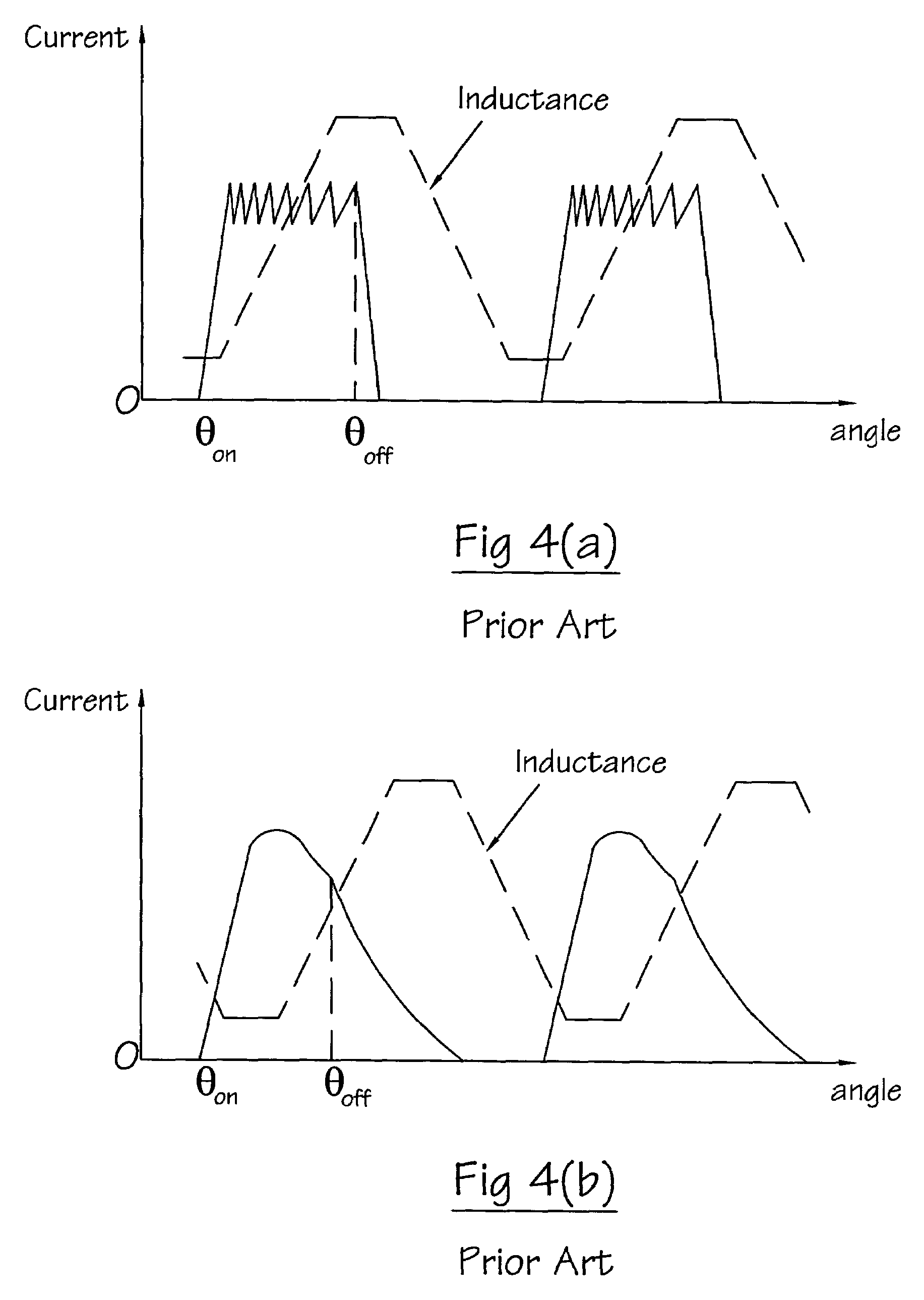Circuit for use with switched reluctance machines
a technology of switching resistance and switch, applied in the field of circuits, can solve the problems of device losses of 10% or more of the input power, device losses associated with the current in the switch and diode may be significant, and the loss of the total input power of the device will probably be below 3% of the total input power,
- Summary
- Abstract
- Description
- Claims
- Application Information
AI Technical Summary
Benefits of technology
Problems solved by technology
Method used
Image
Examples
Embodiment Construction
[0037]Embodiments of the invention take advantage of the characteristic of some switches which are able to conduct current in both directions and also to act as a diode at least on a transient basis. For example, a Metal-Oxide Silicon Field Effect Transistor (MOSFET) has desired characteristics. These characteristics are well-known in the art and are covered in standard texts, e.g. “Power Semiconductor Applications”, Philips Semiconductors, April 1991. Enhancement layer MOSFETs are one possible type of switch to be used.
[0038]As shown in FIG. 8, an embodiment of an excitation circuit for energizing a switched reluctance machine has four active switches MA, MB, MC, and MD, which are optionally MOSFETs, arranged in a bridge configuration around a phase winding 16. The switches are capable of conducting current in both a first direction and a second direction and are capable of operating as a diode. The direction of current flow through the phase winding 16 is reversed when changing fr...
PUM
 Login to View More
Login to View More Abstract
Description
Claims
Application Information
 Login to View More
Login to View More - R&D
- Intellectual Property
- Life Sciences
- Materials
- Tech Scout
- Unparalleled Data Quality
- Higher Quality Content
- 60% Fewer Hallucinations
Browse by: Latest US Patents, China's latest patents, Technical Efficacy Thesaurus, Application Domain, Technology Topic, Popular Technical Reports.
© 2025 PatSnap. All rights reserved.Legal|Privacy policy|Modern Slavery Act Transparency Statement|Sitemap|About US| Contact US: help@patsnap.com



